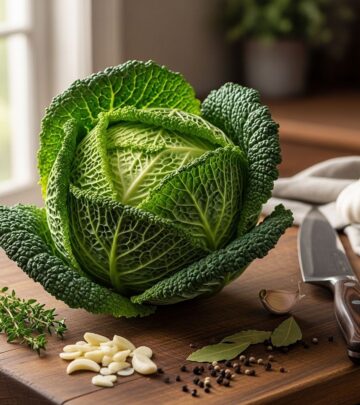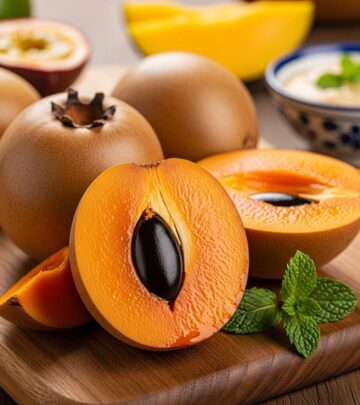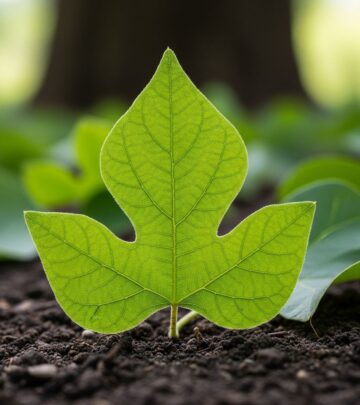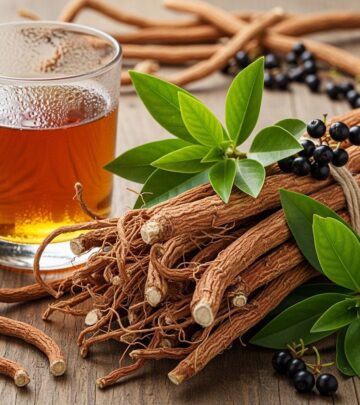Baobab Benefits: Uses, Nutrition, Side Effects, and More
A natural blend rich in vitamin C and fiber to boost immunity and ease digestion.
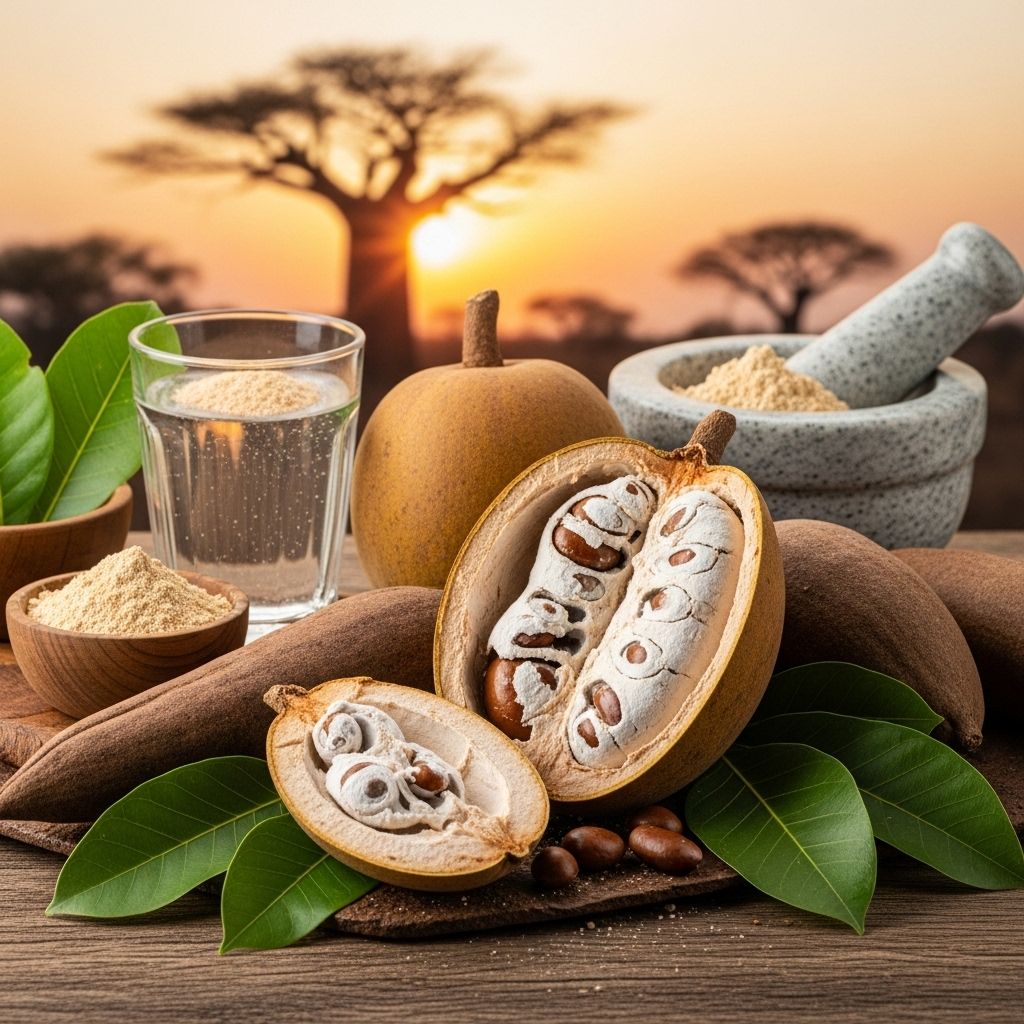
The baobab tree (Adansonia digitata) is an iconic symbol native to Africa, often called the “Tree of Life.” Its fruits, leaves, and even bark have been celebrated for centuries for their impressive nutritional profile and multifaceted medicinal properties. In recent years, baobab has gained global popularity as a superfood due to its rich vitamin, mineral, and antioxidant content. This article examines the health benefits of baobab, its nutrition facts, traditional uses, potential side effects, and the best ways to add it to your diet.
What Is Baobab?
Baobab refers to the fruit of the Adansonia digitata tree, which grows predominantly in Africa’s semi-arid regions, though other species are found in Madagascar and Australia. Baobab is often called the “upside-down tree” because its bare branches look like roots.
Baobab trees can live for thousands of years. They produce large, oval-shaped fruits with a hard shell packed with pulp, seeds, and sometimes leaves, all of which are used in traditional and modern health practices.
- Baobab fruit powder is made by drying and grinding the white pulp found inside the shell.
- Baobab oil is extracted from the seeds and is valued for skin and hair care.
- Baobab leaves are consumed as vegetables or made into infusions.
Nutritional Profile of Baobab
The baobab fruit is a nutritional powerhouse, containing significant amounts of vitamins, minerals, and dietary fiber. Here is a summary of its typical nutritional content per 100 grams of dried baobab powder:
| Nutrient | Amount (per 100g) |
|---|---|
| Total Calories | 250–300 kcal |
| Dietary Fiber | 40–50 g |
| Vitamin C | ~280–300 mg (6 times more than oranges) |
| Calcium | ~250–350 mg |
| Potassium | 1500–2000 mg |
| Magnesium | ~150–180 mg |
| Iron | 1–2.5 mg |
| Antioxidants | Rich in polyphenols |
Baobab is also packed with small quantities of vitamins A, B6, thiamine, and zinc, making it one of the most nutrient-dense fruits found in nature.
Top 10 Health Benefits of Baobab
Let’s explore the evidence-backed ways baobab can support your wellbeing:
1. Boosts Immunity
Baobab is an excellent source of vitamin C, which is crucial for a healthy immune system. A single serving can provide up to 50% of your daily vitamin C needs, strengthening your body’s defenses against infections and illnesses.
- Vitamin C aids in the production of white blood cells and enhances immune response.
- The antioxidant and polyphenol content further helps neutralize free radicals and reduce oxidative stress.
2. Supports Digestive Health
With its extraordinarily high fiber content (nearly 50% by weight), baobab acts as a prebiotic, nourishing beneficial gut bacteria and optimizing digestion. The fiber in baobab is both soluble and insoluble:
- Soluble fiber helps regulate blood sugar and cholesterol.
- Insoluble fiber facilitates bowel regularity and relieves constipation.
- Fibrous content can protect against digestive disorders like ulcers and inflammatory bowel disease.
3. May Aid Weight Loss and Appetite Control
If you are trying to manage your weight, baobab can be a helpful addition to your diet:
- Its fiber promotes satiety and helps curb hunger cravings, resulting in reduced calorie intake.
- Studies show that consuming baobab as part of a meal may prolong feelings of fullness, aiding weight loss efforts.
4. Regulates Blood Sugar Levels
Baobab’s high fiber content slows down the release of sugar into the bloodstream, preventing spikes and crashes.
- Clinical studies suggest that consuming baobab powder with carbohydrate-rich foods can reduce the glycemic response, leading to more stable blood sugar levels.
- This effect is particularly beneficial for people with diabetes or insulin resistance.
5. Fights Inflammation and Oxidative Stress
Rich in antioxidants and polyphenols, baobab helps protect cells from oxidative damage and may reduce inflammation, which is linked to chronic diseases such as heart disease and diabetes.
- Antioxidants in baobab target free radicals responsible for cell damage and inflammation.
- Preclinical animal studies show potential anti-inflammatory and cardioprotective effects.
6. Promotes Skin and Hair Health
Both baobab fruit and baobab oil are valued in natural beauty routines:
- Baobab oil is rich in vitamin E, essential fatty acids, and antioxidants that help moisturize skin, reduce fine lines, and improve elasticity.
- It is a common ingredient in hair care for nourishing the scalp, strengthening hair, and supporting hair growth.
- Topical application can soothe dry skin and provide protection against environmental stressors.
7. Supports Heart Health
By lowering cholesterol (through soluble fiber) and blood pressure (thanks to its potassium content), baobab may contribute to cardiovascular health.
- High potassium and magnesium levels help regulate blood pressure and support overall heart function.
- Antioxidants further protect against heart-related damage.
8. Enhances Hydration and Electrolyte Balance
Baobab contains a balanced profile of electrolytes, including potassium, calcium, and magnesium, making it an excellent choice for hydration and maintaining proper fluid balance, especially after intensive physical activity.
- In traditional African medicine, baobab is used to rehydrate and restore energy.
9. May Support Bone Health
Containing notable amounts of calcium and magnesium, baobab contributes to the improvement and maintenance of healthy bones and teeth.
- Essential minerals in baobab play a key role in bone density and strength.
10. Potential Antimicrobial, Antipyretic, and Analgesic Effects
Traditional African medicine uses various parts of the baobab tree as remedies for fevers, infections, and pain.
- Preliminary studies suggest that baobab extracts have antimicrobial and anti-fever properties.
- Applications range from treating diarrheal diseases to alleviating symptoms of high temperatures.
Traditional Uses of Baobab
The baobab tree is revered across Africa for its medicinal, nutritional, and practical uses:
- Pulp: Consumed for hydration, fever, diarrhea, and dysentery relief.
- Leaves: Eaten as green vegetables or used in decoctions for various ailments.
- Oil: Topically applied for skin conditions, wounds, and as a massage oil.
- Bark & Roots: Used in traditional tonics and for making ropes and textiles.
Potential Side Effects and Precautions
Baobab is generally recognized as safe for most people when consumed in moderation. However, there are some important considerations:
- Anti-nutrients: The seeds and pulp can contain phytates, tannins, and oxalic acid, which may impair nutrient absorption if consumed in very large quantities.
- Baobab oil: Contains cyclopropenoid fatty acids, which may interfere with fatty acid metabolism if overused.
- Blood pressure effects: Baobab may lower blood pressure and reduce heart rate, so individuals with hypotension or cardiac concerns should exercise caution.
- Pregnancy and breastfeeding: There is limited research, but baobab may stimulate uterine contractions; consult a healthcare professional.
- Allergies and medication interactions: Always check with a medical provider before introducing baobab to your diet, especially when taking other supplements or medications.
Most commercial baobab powders undergo processing that reduces harmful compounds, yet prudent consumption is recommended.
How to Use Baobab
Baobab is versatile and easy to incorporate into your diet and wellness routine:
- Powder: Stir into smoothies, juices, yogurts, or oatmeal for a nutritional boost.
- Baked Goods: Add to muffins, pancakes, or energy bars for extra fiber and a tangy flavor.
- Soups & Sauces: Mix into soups or stews as a thickening agent.
- Salads: Sprinkle powder over salads for enhanced nutrition.
- Topical Oil: Use baobab oil for skin and hair hydration, massage, or DIY skincare blends.
A typical serving is 1–2 tablespoons of baobab powder per day. Start small and increase gradually to allow your digestive system to adjust to the fiber.
FAQs About Baobab
Is baobab safe for children and pregnant women?
Baobab is traditionally consumed by all age groups in Africa, but scientific research on its safety in pregnancy and for young children is limited. Consult a healthcare provider before use if you are pregnant or giving baobab to young children.
How does baobab taste?
The fruit pulp has a unique, pleasantly tart flavor likened to citrus, which complements both sweet and savory recipes.
Can baobab help with diabetes?
Baobab’s high fiber content may help moderate blood sugar spikes; however, it is not a substitute for medical treatment. Individuals with diabetes should use baobab as part of a balanced diet and monitor blood sugar levels closely.
Is baobab a good source of protein?
While baobab contains small amounts of protein, it is primarily valued for fiber, vitamin C, and minerals. It is not a significant protein source.
Are there different types of baobab products?
Yes, baobab is available as fruit powder, capsules, dried leaves, seeds, and oil—each with different culinary and topical applications.
Conclusion
The baobab tree truly lives up to its status as the “Tree of Life,” delivering a wide range of health advantages from immune support to digestive wellness, skin care, and beyond. With its impressive nutritional profile and long-standing use in traditional medicine, baobab deserves a place in a modern, health-conscious lifestyle. As with any supplement or superfood, moderation and awareness of potential side effects are key. Enjoy baobab in your smoothies, breakfasts, or skin routine—and reap the natural benefits handed down by one of nature’s most remarkable trees.
References
- https://www.medicinenet.com/what_is_baobab_good_for/article.htm
- https://www.bbcgoodfood.com/health/nutrition/health-benefits-baobab
- https://www.healthline.com/nutrition/baobab
- https://pmc.ncbi.nlm.nih.gov/articles/PMC10180768/
- https://www.webmd.com/vitamins/ai/ingredientmono-1260/baobab
- https://www.medicalnewstoday.com/articles/306445
- https://gokaibae.com/blogs/blog/15-amazing-benefits-of-baobab-powder-youll-love
Read full bio of medha deb

